
You can listen to this episode by clicking on the white arrow above, or subscribe to the Paper Talk podcast on Apple Podcasts (or find more listening options on Spotify) so you never miss an episode. If you enjoy the show, tell a friend about it! Thank you so much.
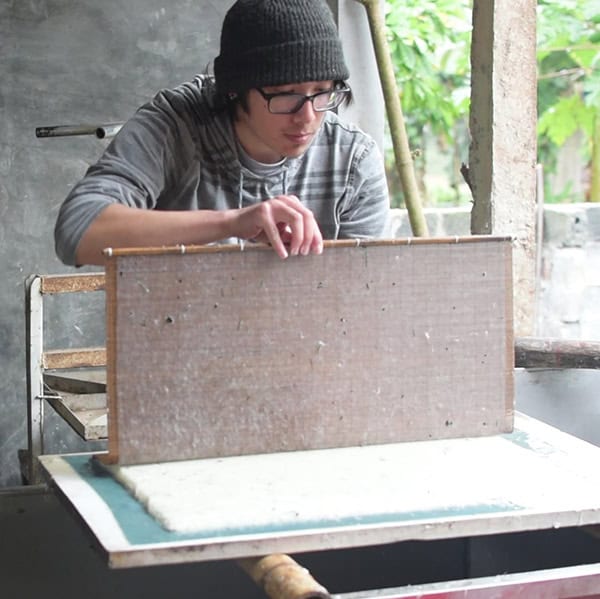
James Ojascastro in Suối Cỏ, Hòa Bình Vietnam, where he was learning papermaking using dướng (paper mulberry; Broussonetia papyrifera) with papermakers belonging to the Mường ethnic group.
James Ojascastro is an origamist, papermaker, and botanist, with a Ph.D. in ethnobotany at Washington University in St. Louis in collaboration with the Missouri Botanical Garden. Ojascastro employs a combination of methods – including fiber trait measurements, experimental papermaking, species distribution modeling, and semistructured interviews – to explore the history, biogeography, and conservation of papermaking traditions (especially of Nepal and Vietnam) through a botanical lens. Outside of academia, Ojascastro uses his research background to guide and inform what plants and which processes will yield paper suitable for origami art.
We had a lovely conversation about Ojascastro’s research about the best papermaking fibers, plant papers, origami art and papermaking traditions.
He creates his own folded designs using a variety of papers. These leaves were made last September during a residency at Oak Spring Garden in Upperville, Virginia, from a wide variety of handmade and machine-made papers. Diagrams for these and other leaves will be in a forthcoming book.
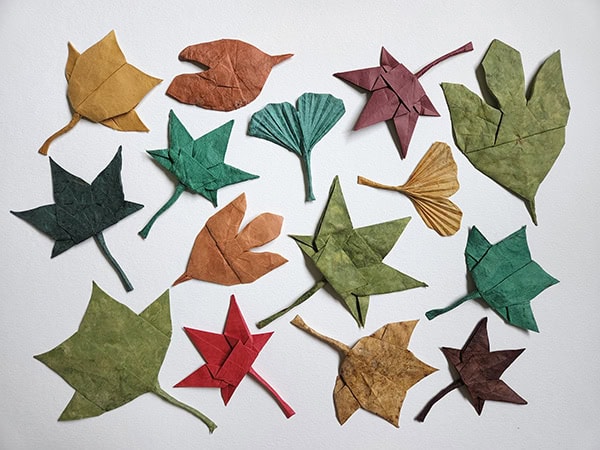
Ojascastro folded these ginkgo leaves from paper he made. The green one is a pigmented bast fiber blend cast using tamezuki formation during Nick Cladis’s Bark Fibers Transformed course at Penland School of Craft; the blend was sourced from papers I made (and subsequently tore into scraps) through TAPPI testing at the University of Iowa Center for the Book’s Oakdale campus. The yellow one is 100% mezereon (Daphne mezereum) bast, dyed after sheet formation with Osage-orange (Maclura pomifera) heartwood (no mordants were used). Mezereon is a European close relative of lokta that is now becoming invasive in forests across central Vermont, upstate New York, western Massachusetts, and parts of south central Maine.
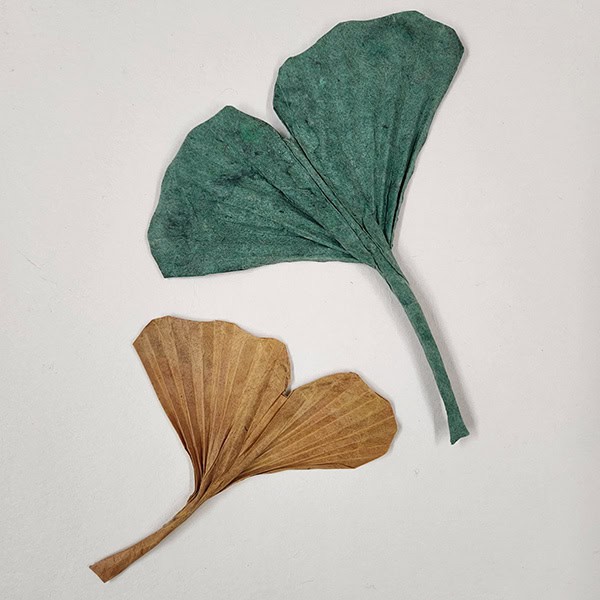
This Bactrian Camel is folded from one uncut hexagon of lokta. Ojascastro likes using lokta for mammals, because the paper is a little thicker and has a texture that mimics mammal fur.

The jacana (it’s a real animal!) is folded from Origamido, which is strong and thin and excellent for sculpting the delicate toes.
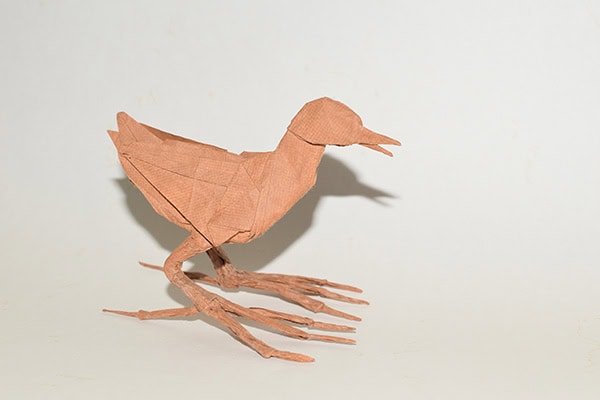
In July 2022, Ojascastro conducted a workshop with botanist and origami artist Cekouat León, alongside amateros from the Santos-Rojas family, to explore the use of amate de mora (mulberry amate – from bark of Mexican mulberry, Morus celtidifolia) for origami.
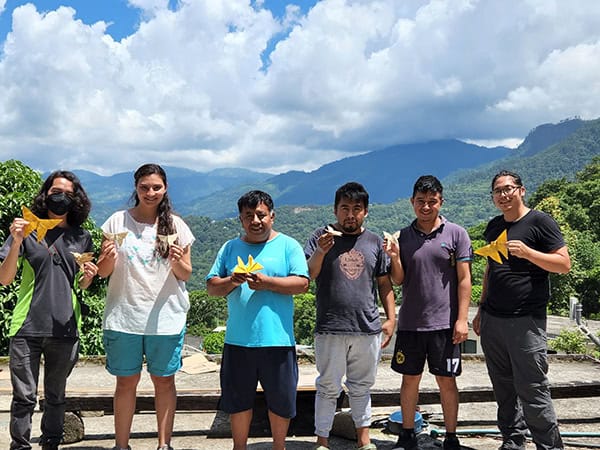
The picture of me with leaves is in Jamaica with , prior to sampling side branches for experimental papermaking for scientific and artistic exploration. Ojascastro and Keren Alfred are working on a project involving the lacebark (Lagetta lagetto) tree, with contributions from textile historian Steeve Buckridge, botanist and illustrator Patty Chan, and Cekouat León. A publication on their work is forthcoming. These pictures illustrate how the bark teases into a gauze, as well as a sample of the gauze from a layer of the inner bark.
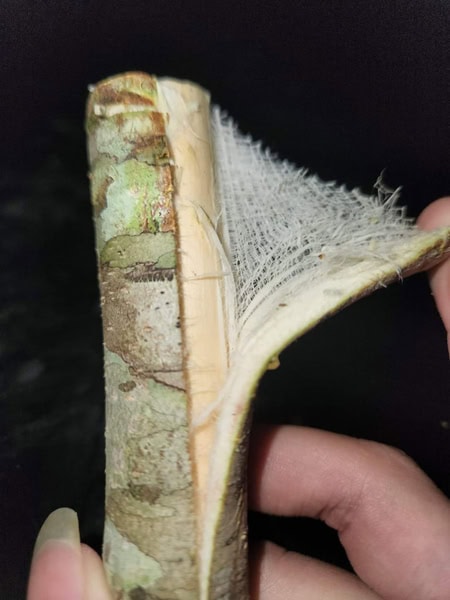 |
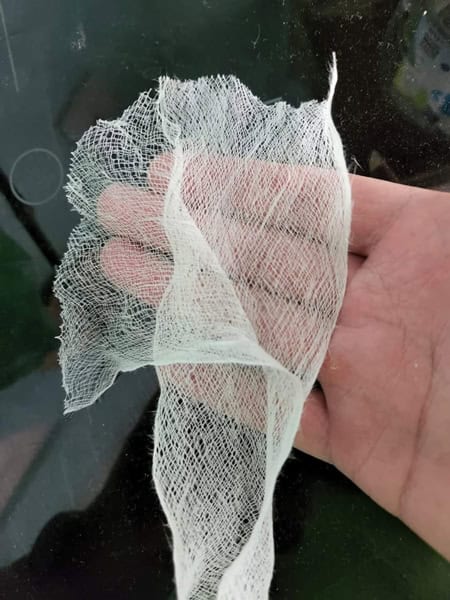 |
++++++
James Ojascastro’s recommendations:
- Hand Papermaking Traditions of Việt Nam, by James Ojascastro, Veronica Y Phạm, Trần Hồng Nhung, and Robbie Hart.
- Origami Shop, run by Nicolas Terry out of Grenoble, France
- Kim’s Crane carries papers that fold well, such as elephant hide
- Cabbage Paper, run by Matt LaBoone who makes handmade abaca papers, with a selection of double-sided sheets
++++++
You can find out more about James Ojascastro on his website, and you can follow him on Instagram.
++++++
Music featuring excerpts of Makin’ Paper folk song by Peter Thomas. Listen to the full song and find out about other paper and book arts folk songs.
Gary A. Hanson did the sound editing for this episode. He practices and refines his skills in audio production while making his own podcast I’ll Have a Beer and Talk, a show about tech news, culture, weird animal stories and of course, beer. Gary is also the Deckle in Pulp & Deckle, a Portland-based community hand papermaking studio.
++++++

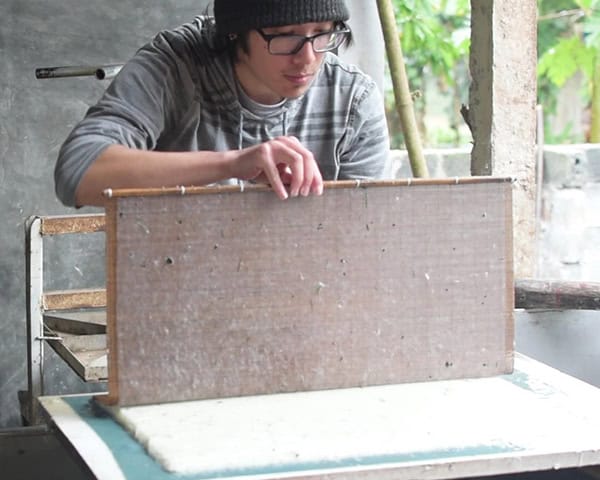
4 Comments
I had the pleasure of having James visit my paper making studio last year. I had met him at the NAHP conference in Providence where he spoke about his research into plant species. It was great to listen to this interview with James and his endless quest to learn all there is about paper and botany. Thank you, Helen.
Thank you for listening, Meg! James is doing such intriguing work!
If you aren’t aware, I’d like to draw your (and James!) attention to Melinda Joy West’s paper making experiments with Pacific Northwest plant fibers. Melinda is an extraordinary basket weaver and sculptor, as well. https://www.melindawest.com/blog/
Thank you, Sue!